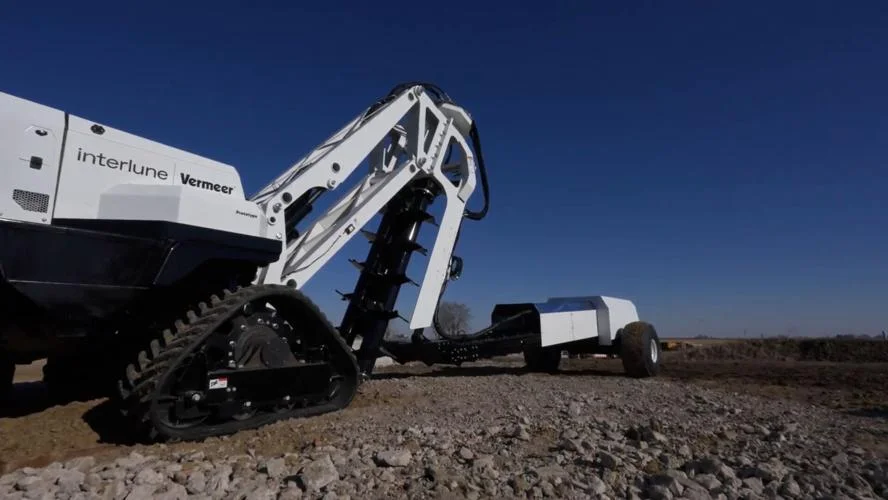
Interlune Aims for Lunar Helium-3 Harvest: Deals Signed, Mining Prototype Unveiled
The race to exploit resources beyond Earth intensifies as Interlune, a US-based startup backed by venture capital, announces groundbreaking deals aimed at harvesting helium-3 from the Moon. This isn't just about futuristic dreams; it involves tangible agreements and innovative technology, signaling a potential shift in resource acquisition. Why is this noteworthy? It highlights the growing interest in space mining and the strategic importance of helium-3, a rare isotope vital for advanced technologies.
Interlune recently revealed a triple-barreled update, showcasing significant progress towards extracting helium-3 on the moon and delivering it back to Earth In collaboration with Vermeer Corp., an Iowa-based industrial equipment manufacturer, Interlune unveiled a full-scale prototype excavator designed to process an impressive 100 metric tons of lunar soil per hour. This specialized machine extracts helium-3 and redeposits the remaining soil back onto the lunar surface seamlessly. The high-rate excavation needed to harvest helium-3 from the moon in large quantities has never been attempted before, let alone with high efficiency.

Adding to these advancements, Interlune has secured separate agreements with the U.S. Department of Energy and Maybell Quantum Industries, aiming to commence supplying lunar helium-3 by 2029. Helium-3 is an isotope scarcer than regular helium-4, yet highly valuable in fields such as quantum computing, fusion power, medical imaging, and national security weapons detection. While scarce on Earth, it's more abundant on the moon due to constant bombardment from solar wind particles.

Gary Lai, Interlune co-founder and chief technology officer, emphasized the unprecedented nature of their undertaking. Lai, who previously served as chief architect for Blue Origin's New Shepard rocket, highlighted the critical need for reliability and stringent performance standards when operating equipment on the lunar surface.
Maybell Quantum will serve as Interlune's first commercial customer, with Interlune providing thousands of liters of helium-3 annually between 2029 and 2035 for use in cooling quantum computing devices. This agreement underscores the critical role helium-3 will play in advancing quantum computing capabilities. The agreement with the Department of Energy marks the first purchase of a non-terrestrial natural resource under the terms of the DOE Isotope Program. Interlune has pegged the commercial price of helium-3 at $20 million per kilogram.
Interlune's ambitious roadmap includes three key missions over the next five years. The first, Crescent Moon, scheduled for the end of 2025, will deploy a hyperspectral camera as a rideshare to the lunar south pole. This will be followed by Prospect Moon, which involves landing a probe in an area believed to have a high helium-3 concentration to validate extraction methods. Finally, Harvest Moon will demonstrate the end-to-end process of extracting helium-3 and returning it to Earth.
Interlune’s bold venture into lunar resource extraction points towards a future where space isn't just for exploration, but also for resource acquisition. Will Interlune successfully commercialize lunar helium-3 mining, and what impact will it have on Earth's technological advancements? Share your thoughts and predictions in the comments below.